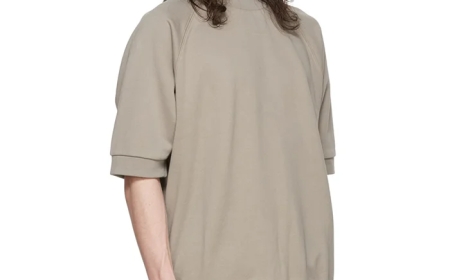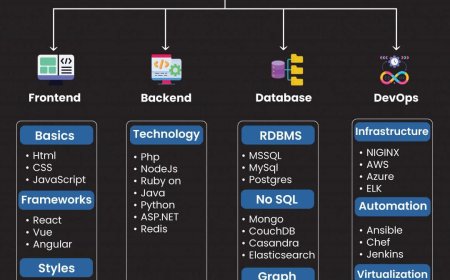How to visit the Omaha Ballet in the Park
How to Visit the Omaha Ballet in the Park The Omaha Ballet in the Park is more than just an outdoor performance—it’s a cultural cornerstone of the city’s summer calendar, bringing world-class dance to public spaces and making the art of ballet accessible to audiences of all ages and backgrounds. Held annually in Omaha’s most beloved green spaces, this free, community-focused event transforms parks
How to Visit the Omaha Ballet in the Park
The Omaha Ballet in the Park is more than just an outdoor performance—it’s a cultural cornerstone of the city’s summer calendar, bringing world-class dance to public spaces and making the art of ballet accessible to audiences of all ages and backgrounds. Held annually in Omaha’s most beloved green spaces, this free, community-focused event transforms parks into open-air theaters where professional dancers perform under the open sky, accompanied by live music and the natural beauty of Nebraska’s summer evenings. For residents and visitors alike, attending the Omaha Ballet in the Park offers a rare opportunity to experience high-caliber artistic expression without the barriers of ticket prices or formal theater etiquette. This guide provides a comprehensive, step-by-step walkthrough on how to plan, prepare for, and fully enjoy your visit to this beloved tradition, ensuring you make the most of every moment under the stars.
Step-by-Step Guide
1. Confirm the Event Dates and Location
Before making any plans, verify the current year’s schedule. The Omaha Ballet in the Park typically runs for three to four consecutive evenings in late June or early July. Dates are subject to change based on weather, venue availability, and artistic programming, so always check the official Omaha Ballet website or their verified social media channels for the most accurate calendar. Locations rotate annually between major Omaha parks such as Aksarben Village, Lewis and Clark Landing, and Fontenelle Forest. Each venue offers a distinct atmosphere—Aksarben provides an urban backdrop with nearby dining, while Fontenelle Forest offers a more secluded, nature-immersed experience. Note the exact address, parking details, and public transit access for your chosen location.
2. Plan Your Arrival Time
While the performances begin at dusk—usually between 8:00 PM and 8:30 PM—it’s strongly recommended to arrive at least 60 to 90 minutes early. This allows ample time to secure a comfortable viewing spot, especially since seating is first-come, first-served on the grass. Popular areas near the stage fill quickly, and arriving early gives you the advantage of choosing a flat, shaded, or scenic location. Families with children, elderly guests, or those with mobility needs should aim to arrive even earlier to ensure access to preferred spots. Arriving early also lets you enjoy the pre-performance ambiance: local food vendors, live acoustic music, and community interactions that are integral to the event’s charm.
3. Pack the Essentials
Outdoor performances require thoughtful preparation. Here’s a curated checklist of items to bring:
- Blankets or low-backed lawn chairs – Most attendees bring large, soft blankets for comfort and to mark their space. If using chairs, ensure they are low enough not to obstruct the view of others behind you.
- Bug spray and sunscreen – Nebraska evenings can be surprisingly buggy, and residual sunlight may still be strong. Reapply sunscreen before dusk and use DEET-based repellents for mosquitoes.
- Light snacks and water – While food trucks are usually on-site, bringing your own non-perishable snacks (granola bars, fruit, crackers) and a refillable water bottle helps avoid long lines and keeps you hydrated.
- Layered clothing – Summer nights in Omaha can cool down quickly after sunset. Bring a light jacket, shawl, or sweater even if it’s warm during the day.
- Portable lighting – A small battery-powered lantern or headlamp (with red-light mode) is useful for navigating the park after dark without disturbing others.
- Small trash bag – Help preserve the park’s beauty by packing out everything you bring in.
4. Understand the Event Flow
The evening typically unfolds in three phases:
- Pre-Performance (6:00 PM – 7:45 PM) – Guests arrive, set up seating, explore food vendors, and enjoy live music from local artists. Children’s activities, such as face painting or dance workshops, may be offered near the entrance.
- Performance (8:00 PM – 9:30 PM) – The Omaha Ballet performs a curated program of 3–5 pieces, ranging from classical excerpts to contemporary choreography. The show is approximately 90 minutes long, with no intermission.
- Post-Performance (9:30 PM – 10:00 PM) – Dancers often greet guests near the stage for brief photo opportunities. This is a unique chance to thank the performers and ask questions. Lights dim gradually as the crowd disperses.
Be mindful that the performance begins promptly. Latecomers may be asked to wait until a suitable pause in the choreography to enter the viewing area to avoid disrupting the dancers and audience.
5. Navigate Parking and Transportation
Each venue has designated parking areas, but they fill rapidly. For Aksarben Village, parking is available in adjacent lots and street parking along 72nd Street. At Lewis and Clark Landing, the closest parking is near the Riverfront Trailhead, with overflow options at nearby municipal lots. Consider carpooling or using ride-sharing services to reduce congestion. For those without vehicles, Omaha’s Metro Transit offers bus routes that connect to each park location. Check the Metro website for evening schedules, as service frequency decreases after 7:00 PM. Biking is also encouraged—secure bike racks are provided at all venues.
6. Prepare for Weather Conditions
Outdoor events are weather-dependent. If rain is forecast, the Omaha Ballet team will announce cancellations or postponements via their website and social media by 3:00 PM on the day of the event. In case of light rain, performances may proceed with umbrellas permitted (as long as they don’t obstruct views). Thunderstorms or high winds will result in cancellation for safety reasons. There are no rain dates scheduled, so plan accordingly. Always check the forecast the night before and be ready to adjust your plans if needed.
7. Respect the Environment and Community
The Omaha Ballet in the Park is a gift to the public, made possible by community support and environmental stewardship. Follow Leave No Trace principles: avoid trampling on grass beyond your seating area, dispose of all waste properly, and keep noise to a minimum during the performance. Refrain from using flash photography or recording video—this disrupts the dancers and violates copyright. Children should be supervised and encouraged to appreciate the quiet beauty of live performance. Your respect ensures this tradition continues for future generations.
Best Practices
1. Arrive Early, But Not Too Early
While arriving early is essential, showing up more than two hours before the performance may be unnecessary and uncomfortable. Aim for 6:30 PM to 7:00 PM as the sweet spot. This gives you enough time to settle in without enduring prolonged exposure to heat or insects before the show begins.
2. Choose Your Spot Strategically
For the best viewing experience, position yourself at a slight elevation if possible. Look for gentle slopes or raised areas near the stage. Avoid setting up directly behind trees, light poles, or large groups that may block your view. If you’re bringing children, sit toward the front or sides where they can see over the crowd. For couples or small groups, consider a spot slightly off-center—this often provides a more immersive perspective than the dead center, where the stage may feel too frontal.
3. Minimize Distractions
Turn off your phone’s ringer and notifications. Avoid using your screen during the performance—even the glow of a phone can be distracting to dancers and nearby guests. If you need to take a photo, wait for designated moments or use the post-performance meet-and-greet. Silence your watch alarms and avoid loud conversations. This is a performance, not a picnic.
4. Dress for Comfort and Appropriateness
There’s no formal dress code, but many attendees dress in summer attire with a touch of elegance—think sundresses, linen shirts, or light blazers. Avoid overly bright or reflective clothing that may catch the stage lights. Comfortable footwear is key, especially if you plan to walk around before or after the show. Flip-flops are acceptable, but closed-toe shoes offer better protection on uneven grass.
5. Engage with the Art
Don’t just watch—listen and feel. Ballet is a language of movement. Pay attention to the music, the dancers’ expressions, and the way the choreography responds to the environment. Notice how the wind affects the costumes or how the fading light alters the mood. Many pieces are inspired by Nebraska’s landscapes, seasons, or stories. Let the performance connect you to the place and the people around you.
6. Bring a Journal or Sketchbook
For those who are creatively inclined, bringing a small notebook or sketchpad enhances the experience. Jot down your impressions, sketch a dancer’s pose, or write a haiku inspired by the music. This transforms the event from passive entertainment into a personal, reflective moment.
7. Support the Arts Beyond the Event
While the performance is free, the Omaha Ballet relies on donations and community partnerships to sustain its programming. Consider making a voluntary contribution at the event’s donation station, purchasing merchandise, or signing up for their newsletter to stay informed about year-round classes, workshops, and performances. Your support ensures that future generations can enjoy this same magic.
Tools and Resources
Official Omaha Ballet Website
The primary resource for accurate, up-to-date information is www.omahaballet.org. The site includes the current year’s schedule, venue maps, parking guides, performer bios, and program notes. Bookmark this page and check it regularly in the weeks leading up to the event.
Omaha Ballet Social Media Channels
Follow the Omaha Ballet on Instagram, Facebook, and Twitter (@OmahaBallet). These platforms provide real-time updates, behind-the-scenes content, weather alerts, and live updates on the day of the event. Many dancers and staff post personal insights about the choreography, making your viewing experience richer.
Google Maps and Park Apps
Use Google Maps to preview the layout of the venue before you go. Search for “Lewis and Clark Landing” or “Aksarben Village” and enable satellite view to identify open grassy areas, restrooms, and entrances. The Omaha Parks and Recreation app also offers downloadable park maps and real-time facility status.
Weather Apps with Radar
Download a reliable weather app such as WeatherBug, MyRadar, or the National Weather Service app. These offer hyperlocal forecasts and live radar, helping you anticipate rain or wind shifts. Set up alerts for your event location so you’re notified if conditions change.
Local Transit Tools
For public transportation, use the Metro Transit website or app to plan your route. Enter your starting point and the event venue to get real-time bus schedules. Consider downloading Transit App, which integrates multiple transit systems and provides walking directions to stops.
Audio Companion Resources
Some performances feature pre-recorded audio commentary available via QR code on event signage. Scan the code with your phone to hear insights from the choreographer or conductor. These short clips (2–5 minutes each) explain the historical context, musical structure, or emotional intent behind each piece—great for first-time ballet attendees.
Volunteer and Donation Platforms
Interested in giving back? The Omaha Ballet accepts volunteer applications for event setup, ushering, and guest assistance. Visit their website’s “Get Involved” section to sign up. Donations can be made online or via QR code at the event. Every dollar helps fund scholarships for young dancers and outreach programs in underserved schools.
Local Food and Beverage Guides
Food vendors vary each year, but popular local favorites often include The Creamery, Kona Ice, and Omaha-based food trucks like Tacos El Gordo and The Griddle. Check the Omaha Food Truck Association’s website for a list of confirmed vendors for the event. Many vendors accept cash only, so bring small bills.
Real Examples
Example 1: The Smith Family – First-Time Attendees
The Smiths, a family of four from Papillion, attended the Omaha Ballet in the Park for the first time in 2023. Their daughter, 8-year-old Maya, had been taking ballet classes for a year and begged to see a live performance. They arrived at 6:15 PM at Aksarben Village with a large floral blanket, water bottles, and a small cooler with cheese sticks and grapes. They sat near the front-left corner, giving Maya a clear view. During the performance, she gasped during the “Swan Lake” pas de deux and whispered, “That’s what I want to do.” After the show, she met one of the dancers, who gave her a ribbon from her costume. The Smiths returned the next year—and have become regular supporters, donating $25 each time.
Example 2: James, a Retired Teacher
James, 72, has attended every Omaha Ballet in the Park since its inception in 2005. He brings his folding chair, a thermos of iced tea, and a notebook. Each year, he writes a short reflection on the program’s theme. In 2022, inspired by the piece “Wind Across the Plains,” he penned a poem that was later featured in the Omaha World-Herald’s arts section. He now brings a group of his former students each year, creating a tradition that spans generations.
Example 3: The University Dance Club
A group of 15 students from the University of Nebraska at Omaha’s Dance Department attended the 2023 event as part of their choreography seminar. They sat together, analyzed movement patterns, and took notes on lighting transitions. One student later recreated a section of the performance in her thesis project, citing the outdoor setting as a key influence on her understanding of spatial dynamics in dance. The club now sponsors a scholarship for a local high school dancer each year, funded by proceeds from their own fundraising bake sale.
Example 4: Visitors from Kansas City
A couple from Kansas City, visiting Omaha for the first time, stumbled upon the event while walking along the Missouri River. They had no prior knowledge of the Omaha Ballet but were drawn by the music and lights. They stayed for the entire performance, bought a program, and later wrote a glowing review on TripAdvisor. Their post went viral among regional travel blogs, leading to a 17% increase in out-of-town visitors the following year.
Example 5: The Accessibility Initiative
In 2021, the Omaha Ballet partnered with local disability advocates to improve accessibility. They introduced designated viewing zones with ADA-compliant seating, sign language interpreters for the pre-show announcement, and tactile programs for visually impaired guests. One attendee, a blind woman from Lincoln, described the experience as “the first time I truly felt the rhythm of dance—not with my eyes, but with my heart.” Since then, tactile programs have become a permanent feature.
FAQs
Is the Omaha Ballet in the Park really free?
Yes. Admission to the Omaha Ballet in the Park is completely free for all attendees. No tickets are required. The event is funded through sponsorships, private donations, and city arts grants.
Can I bring my dog?
No. Pets are not permitted at the event for the safety of dancers, guests, and animals. Service animals as defined by the ADA are welcome, but must remain on a leash and under control at all times.
What happens if it rains?
If rain is expected, the Omaha Ballet team will announce cancellations by 3:00 PM on the day of the event via their website and social media. There are no rain dates, and performances are not rescheduled. Check for updates if weather is uncertain.
Are restrooms available?
Yes. Portable restrooms are placed throughout the venue and are cleaned regularly. Accessible units are available. Some locations also have nearby permanent restrooms in adjacent buildings.
Can I bring alcohol?
No. Alcohol is strictly prohibited in public parks in Omaha during events. This is enforced by park rangers and event staff.
Are there seating options for people with mobility challenges?
Yes. Designated ADA viewing areas with flat, level ground and space for wheelchairs are available at each venue. These areas are clearly marked on site maps and can be accessed via designated pathways. Contact the Omaha Ballet in advance if you require special accommodations.
Can I take photos or videos?
Still photography without flash is permitted for personal use. Video recording, live streaming, and professional photography are not allowed, as they interfere with the performance and violate copyright. Please enjoy the moment live.
How long does the performance last?
The performance typically lasts 90 minutes, with no intermission. Plan to be at the venue from approximately 7:00 PM to 10:00 PM.
Are children welcome?
Absolutely. Children of all ages are encouraged to attend. The performances are family-friendly and often include shorter, upbeat pieces that appeal to younger audiences. However, please ensure children are able to sit quietly and respectfully during the performance.
What if I forget something?
Basic essentials like blankets, water, and sunscreen are available for purchase from select vendors on-site, but prices are higher than retail. It’s best to come prepared.
Can I volunteer at the event?
Yes. The Omaha Ballet welcomes volunteers for setup, ushering, guest assistance, and cleanup. Applications open in May each year via their website. No prior experience is required.
Do I need to reserve a spot?
No. All seating is first-come, first-served. There is no reservation system.
Is there a program I can take home?
Yes. Printed programs are available for free at the entrance. They include dancer bios, choreography notes, and sponsor acknowledgments. Digital versions are also available on the Omaha Ballet website.
Conclusion
The Omaha Ballet in the Park is more than a summer performance—it’s a living expression of community, artistry, and shared humanity. It transforms ordinary grassy fields into sacred spaces where movement becomes poetry, music becomes memory, and strangers become witnesses to something beautiful. By following this guide, you’re not just attending an event—you’re participating in a tradition that has, for nearly two decades, brought Omaha together under the stars. Whether you’re a lifelong ballet enthusiast, a curious newcomer, or a parent sharing the wonder with your child, your presence matters. Come prepared, stay respectful, and let the dance move you. The next time the music begins and the lights dim, you won’t just be watching a performance—you’ll be part of its story. And that’s a gift worth remembering.





















